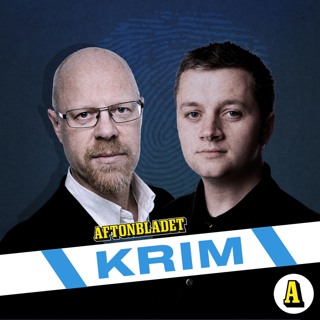
Judge Hippler's Order On Bryan Kohberger's Capital Punishment Motions (Part 7)
In State v. Bryan C. Kohberger, Case No. CR01-24-31665, Judge Steven Hippler issued a Memorandum Decision and Order addressing multiple defense motions aimed at removing the death penalty as a sentencing option. The defense presented 12 motions challenging various aspects of Idaho's capital punishment framework, including the constitutionality of execution methods and the applicability of certain aggravating factors. After thorough consideration, Judge Hippler denied all motions, affirming that the death penalty remains a viable sentencing option in this case.The court's 55-page decision systematically addressed each defense argument, referencing precedents set by the Idaho Supreme Court and the U.S. Supreme Court that uphold the constitutionality of capital punishment. Judge Hippler concluded that the defense's claims did not warrant the removal of the death penalty, allowing the prosecution to continue seeking it as a potential sentence. This ruling signifies a pivotal moment in the proceedings, underscoring the court's commitment to adhering to established legal standards in capital cases. to contact me:bobbycapucci@protonmail.comsource:112024-Memorandum-Decision-Order-Death-Penalty-Motions.pdfBecome a supporter of this podcast: https://www.spreaker.com/podcast/the-moscow-murders-and-more--5852883/support.
28 Sep 12min

Judge Hippler's Order On Bryan Kohberger's Capital Punishment Motions (Part 6)
In State v. Bryan C. Kohberger, Case No. CR01-24-31665, Judge Steven Hippler issued a Memorandum Decision and Order addressing multiple defense motions aimed at removing the death penalty as a sentencing option. The defense presented 12 motions challenging various aspects of Idaho's capital punishment framework, including the constitutionality of execution methods and the applicability of certain aggravating factors. After thorough consideration, Judge Hippler denied all motions, affirming that the death penalty remains a viable sentencing option in this case.The court's 55-page decision systematically addressed each defense argument, referencing precedents set by the Idaho Supreme Court and the U.S. Supreme Court that uphold the constitutionality of capital punishment. Judge Hippler concluded that the defense's claims did not warrant the removal of the death penalty, allowing the prosecution to continue seeking it as a potential sentence. This ruling signifies a pivotal moment in the proceedings, underscoring the court's commitment to adhering to established legal standards in capital cases. to contact me:bobbycapucci@protonmail.comsource:112024-Memorandum-Decision-Order-Death-Penalty-Motions.pdfBecome a supporter of this podcast: https://www.spreaker.com/podcast/the-moscow-murders-and-more--5852883/support.
27 Sep 13min

Judge Hippler's Order On Bryan Kohberger's Capital Punishment Motions (Part 5)
In State v. Bryan C. Kohberger, Case No. CR01-24-31665, Judge Steven Hippler issued a Memorandum Decision and Order addressing multiple defense motions aimed at removing the death penalty as a sentencing option. The defense presented 12 motions challenging various aspects of Idaho's capital punishment framework, including the constitutionality of execution methods and the applicability of certain aggravating factors. After thorough consideration, Judge Hippler denied all motions, affirming that the death penalty remains a viable sentencing option in this case.The court's 55-page decision systematically addressed each defense argument, referencing precedents set by the Idaho Supreme Court and the U.S. Supreme Court that uphold the constitutionality of capital punishment. Judge Hippler concluded that the defense's claims did not warrant the removal of the death penalty, allowing the prosecution to continue seeking it as a potential sentence. This ruling signifies a pivotal moment in the proceedings, underscoring the court's commitment to adhering to established legal standards in capital cases. to contact me:bobbycapucci@protonmail.comsource:112024-Memorandum-Decision-Order-Death-Penalty-Motions.pdfBecome a supporter of this podcast: https://www.spreaker.com/podcast/the-moscow-murders-and-more--5852883/support.
27 Sep 11min

Transcripts From The Bill Barr Epstein Related Congressional Deposition (Part 9) (9/27/25)
Bill Barr’s deposition before Congress on Jeffrey Epstein was a masterclass in calculated deflection. While Barr insisted that Epstein’s death was “absolutely” suicide, he conceded that the prison surveillance system had “blind spots”—a detail that conveniently leaves just enough room for speculation without providing definitive answers. His reliance on flawed or incomplete camera footage, combined with his dismissal of alternative forensic perspectives, came off less like transparency and more like institutional damage control. Instead of holding the Bureau of Prisons accountable, Barr’s narrative positioned the failures as unfortunate but inconsequential, a stance that fails to satisfy the public demand for clarity.Just as troubling was Barr’s evasiveness when pressed about Donald Trump’s knowledge of Epstein. He admitted to having spoken with Trump about Epstein’s death but couldn’t recall when one of those conversations occurred—an astonishing lapse considering the gravity of the matter. His reasoning that “if there were more to it, it would have leaked” was not only flippant but dismissive of the very real history of suppression, obstruction, and selective disclosure that has defined the Epstein saga. By leaning on institutional trust in a case defined by betrayal of that very trust, Barr’s testimony did little more than reinforce suspicions that the Department of Justice has long been more concerned with containment than accountability.to contact me:bobbycapucci@protonmail.comsource:Barr-Transcript.pdfBecome a supporter of this podcast: https://www.spreaker.com/podcast/the-moscow-murders-and-more--5852883/support.
27 Sep 11min

The Gilgo Beach Murders: Where Things Currently Stand (Part 5) (9/27/25)
The Gilgo Beach murders refer to a string of killings uncovered in December 2010, when police searching for missing woman Shannan Gilbert discovered multiple sets of human remains along a stretch of Ocean Parkway on Long Island, New York. Over time, investigators identified at least ten sets of remains, including four women—Maureen Brainard-Barnes, Melissa Barthelemy, Megan Waterman, and Amber Lynn Costello—collectively known as the “Gilgo Four.” These women were sex workers who had advertised services online and were believed to have been targeted in similar ways. Their remains were all found within a quarter mile of each other, suggesting the work of a single serial killer.The case quickly grew more complex as other bodies were found in the vicinity, including those of men and a toddler, raising questions about whether multiple killers were involved. The murders became one of the most notorious unsolved cases in the U.S., plagued by investigative missteps, accusations of police corruption, and years of stagnation. In 2022, renewed investigative efforts using modern forensic techniques and cellphone data led authorities to Rex Heuermann, a Long Island architect who was arrested in 2023 and charged with several of the murders. His arrest has provided long-awaited answers, but the full scope of the killings—and whether all the victims can be linked to one perpetrator—remains unresolved.to contact me:bobbycapucci@protonmail.comBecome a supporter of this podcast: https://www.spreaker.com/podcast/the-moscow-murders-and-more--5852883/support.
27 Sep 12min

Prince Andrew Paid For Jeffrey Epstein Provided "Massages" According To New Documents (9/27/25)
Newly disclosed U.S. congressional records show that Prince Andrew was listed as a passenger on Jeffrey Epstein’s private plane on May 12, 2000, traveling from Teterboro, New Jersey, to Palm Beach, Florida. In a related “general ledger,” Andrew is referenced as having paid $200 for “massage, exercise and yoga” services in February 2000 — the same amount Epstein’s victims have said they were paid for massages linked to abuse. The documents also place Andrew on Epstein’s jet in later years, including 2002 and 1999 trips to the U.S. Virgin Islands, with his name appearing multiple times in the flight logsThough Andrew has consistently denied any improper conduct, the revelations are intensifying calls from U.S. officials to subpoena him to testify, alongside several other high-profile figures named in the released materials. The documents, part of over 8,500 records surrendered by Epstein’s estate, also reveal connections between Epstein and prominent public figures such as Elon Musk, Steve Bannon, and Peter Thiel — with potential meetings and visits to Epstein’s island documented in his calendar logs.to contact me:bobbycapucci@protonmail.comsource:Andrew ‘flew on Jeffrey Epstein’s jet and received massages’Become a supporter of this podcast: https://www.spreaker.com/podcast/the-moscow-murders-and-more--5852883/support.
27 Sep 12min

Know Thy Enemy: Understanding Al-Qaeda’s Legacy in the 21st Century (Part 3-4) (9/27/25)
The "Know Thy Enemy" report by the Transatlantic Intelligence Consortium (TIC) offers a comprehensive analysis of the evolving strategies and structures of terrorist organizations, with a particular focus on Al-Qaeda and its affiliates. The report delves into the formation of a unified Islamic army, referred to as 'The Army of Imam Mahdi,' comprising 95 terrorist organizations active in 38 countries, totaling over 700,000 jihadi combatants. This coalition, under the leadership of Hamza Bin Laden and the Haqqani Network, aims to restore and expand the Caliphate across the Middle East, Asia, and Africa.Additionally, the report examines the financial mechanisms supporting these groups, highlighting how funding from international entities, including the US, UN, and EU, inadvertently contributes to terrorism in regions like Afghanistan. It also provides detailed maps and charts that track the global jihadist movement, illustrating key regions of activity, territorial control, and the shifting alliances of militant groups. By offering insights into recruitment patterns, regional hubs of extremism, and communication channels, the TIC underscores the importance of understanding the complex dynamics of global jihad to effectively counter these threats..to contact me:bobbycapucci@protonmail.comsource:October 7th: Know Thy EnemyBecome a supporter of this podcast: https://www.spreaker.com/podcast/the-moscow-murders-and-more--5852883/support.
27 Sep 26min

Know Thy Enemy: Understanding Al-Qaeda’s Legacy in the 21st Century (Part 1-2) (9/27/25)
The "Know Thy Enemy" report by the Transatlantic Intelligence Consortium (TIC) offers a comprehensive analysis of the evolving strategies and structures of terrorist organizations, with a particular focus on Al-Qaeda and its affiliates. The report delves into the formation of a unified Islamic army, referred to as 'The Army of Imam Mahdi,' comprising 95 terrorist organizations active in 38 countries, totaling over 700,000 jihadi combatants. This coalition, under the leadership of Hamza Bin Laden and the Haqqani Network, aims to restore and expand the Caliphate across the Middle East, Asia, and Africa.Additionally, the report examines the financial mechanisms supporting these groups, highlighting how funding from international entities, including the US, UN, and EU, inadvertently contributes to terrorism in regions like Afghanistan. It also provides detailed maps and charts that track the global jihadist movement, illustrating key regions of activity, territorial control, and the shifting alliances of militant groups. By offering insights into recruitment patterns, regional hubs of extremism, and communication channels, the TIC underscores the importance of understanding the complex dynamics of global jihad to effectively counter these threats..to contact me:bobbycapucci@protonmail.comsource:October 7th: Know Thy EnemyBecome a supporter of this podcast: https://www.spreaker.com/podcast/the-moscow-murders-and-more--5852883/support.
27 Sep 22min





















